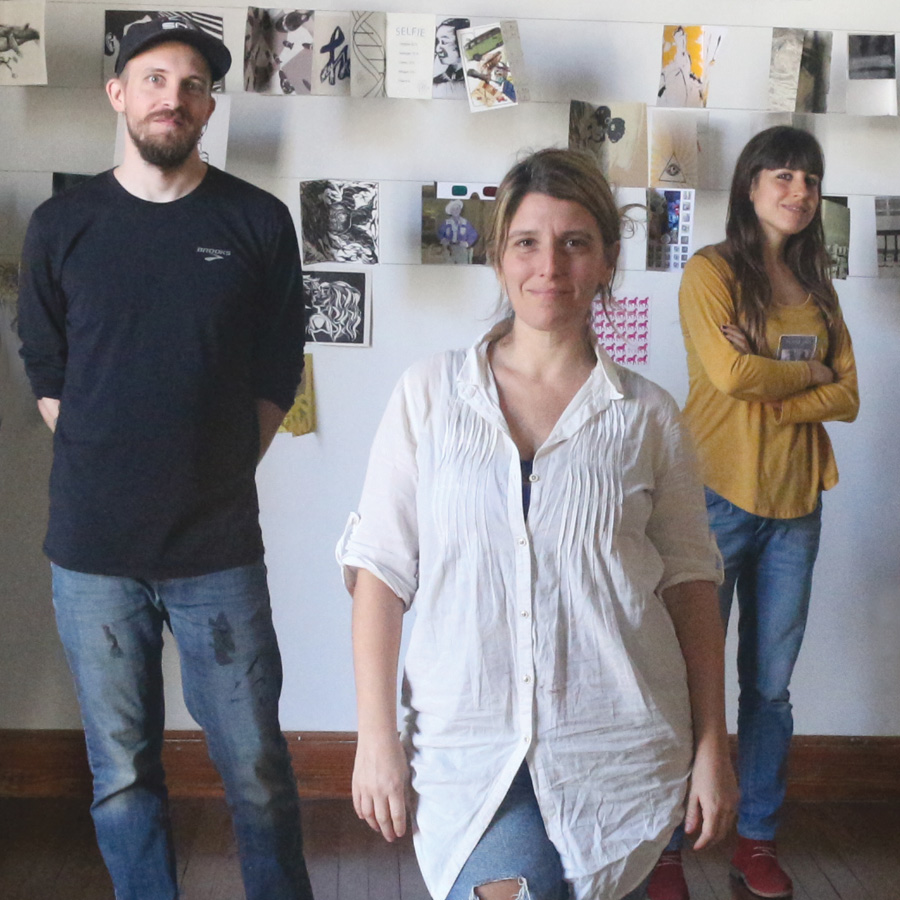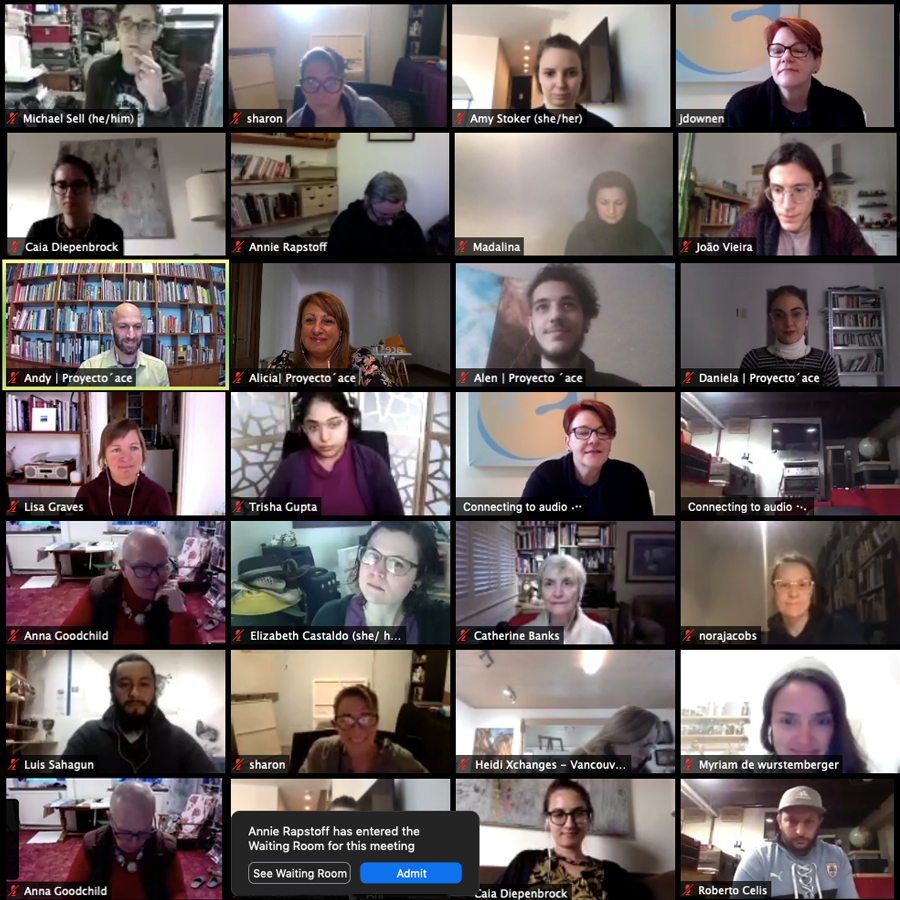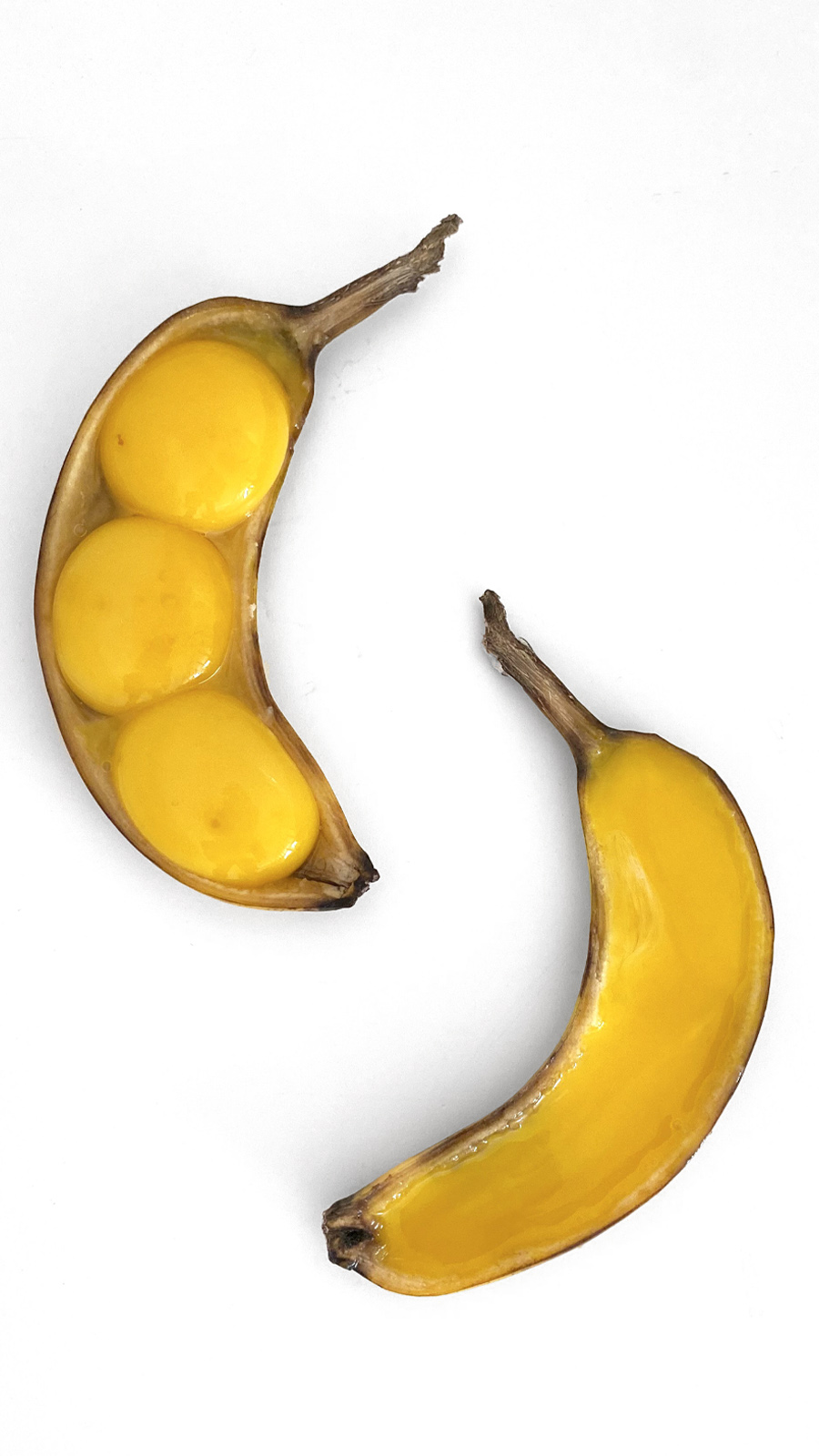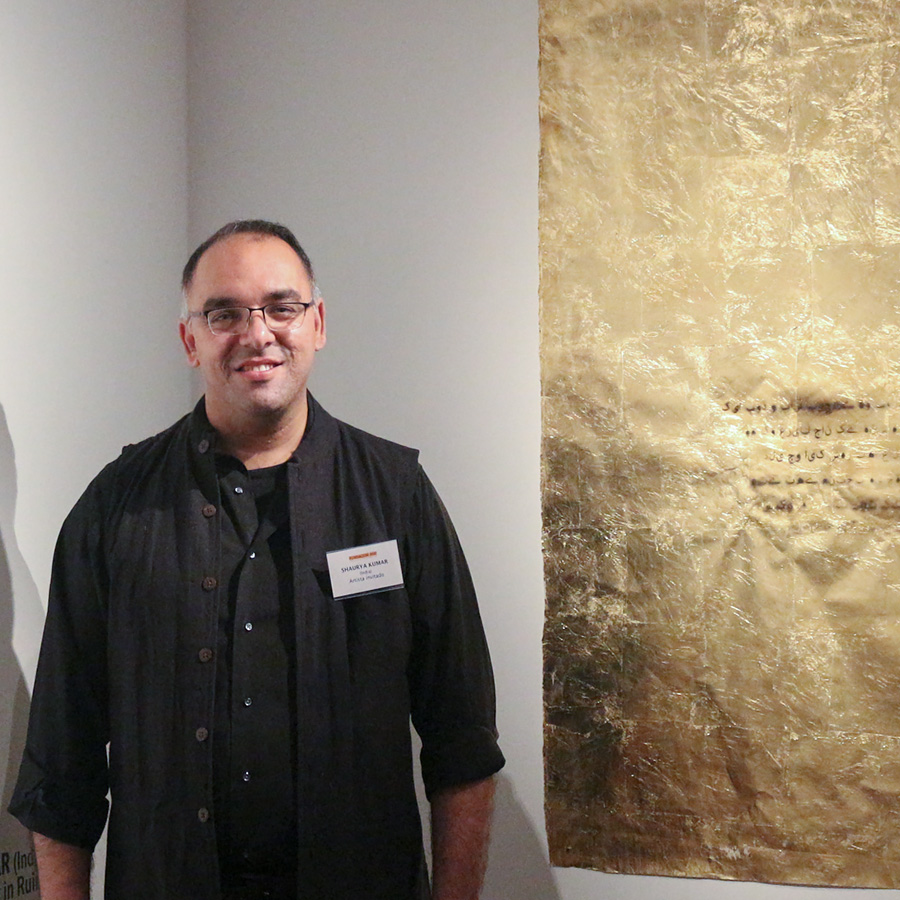Artists
United States of America
Trisha Gupta
Together Apart: # Frontier
10.02.21 03.03.21
Trisha Gupta is a contemporary artist, a community activist, an educator, and a multidisciplinary artist.
She works with textiles, paint, printmaking, and a variety of diverse mediums. Her work is heavily influenced by social inequality and she explores themes of mental health. She advocates for neuro-diversity and for tolerance.
ARTIST´S STATEMENT
I believe that neuro-diversity is as important as biodiversity. I deeply believe that reality is a subjective experience, and that the only way to create a single reality is to standardize people’s experiences and genetics. For me, I am very interested in narratives that show diversity in the way the mind processes, remembers, or deals with information. And I am drawn to individuals with PTSD, complex trauma, psychosis, and other mental illnesses.
As an artist, the frontier for me is the lack of cross cultural competence in modern health treatment. I am interested in how definitions of ‘normal’ behaviour are completely different geographically. And I am frustrated with how little modern psychopathology considers the effect of culture on an individual. As an artist, I have a background in mental health, art therapy, and occupational therapy. I have worked in a variety of different settings where individuals’ diagnosis are highly influenced by race and gender. Prisons and mental hospital wards are some of the most charged spaces for me. I am interested in understanding and respecting people and removing biases.
ABOUT FRONTIER
As a group of three artists, we found commonality in our lack of interest in linear narratives. We were interested in how a circle or an object in motion breaks free from its static shape. I worked on creating brain sculptures and breaking, dividing, and moving them to have them reform or fall apart.
We incorporated colors into the narrative that were part of our practices. These colors were used to map our process and to provide a visual alternative to black and white .We overlaid images of objects that were still, spinning, and breaking or collapsing. In general we found many commonalities.
BIO
Trisha Gupta
1987, Highland Park Chicago, USA
Lives and works in Burtonsville Maryland, USA
STUDIES
2010 | BFA in printmaking from Washington University in St. Louis, MO,USA
EXHIBITIONS
2017 | Under 100, International Print Center, NY, USA.
2019 | The Art Students League of New York Printmakers’ Portfolio, The Old Print Shop Inc., NY, USA.
2017 | E/AB print Fair, Totemic, Lower East Side Printshop, NY, USA.
2017 | The Art of Healing, Northern Manhattan Art and Cultural Alliance, Allen Hospital, NY, USA.
2017 | Truthiness, DA. Discordant Abstractions, Dubious Americans, Boston Print Fair, MA, USA.
2012 | American Impressions Contemporary Printmaking, Shanghai, China.
RESIDENCIES
2020 | Artist | Textile Immersion Program | Textile Arts Center, New York, USA
2020 | Artist in Residence| Helen’s Dress | Vamvakou Revival | Vamvakou, Greece.
2010-2011 | Teaching Artist in Residence | Pyramid Atlantic,|Silver Spring, MD, USA.
2014 | Why do Foreign Backpackers not Visit Taiwan?, Young Designers Competition YODEX, Taipei, Taiwan (documentary screening) Placed second in country wide competition.
COLLECTIONS
Manhattan Graphics Center Permanent collection, New York, NY. USA
New York Public Library Permanent Collection, New York, NY. USA
The Art Students League, New York, NY. USA
National Print Museum, Dublin, Ireland.
Kranzenburg Art and Architecture Library, Saint Louis, MO. USA
Related Activities
Exhibitions, Together Apart
#3 | FRONTIER: results
Artists in dialogue
10.03.21
Frontiers as geopolitical frontiers, as cultural, biopolitical; frontiers as limits and as separations within the artistic disciplines, frontiers as hegemonic considerations of our bodies and identities…were some of the approaches on FRONTIER general theme in the Together Apart Program #3 session.
Through 4 encounters we collectively and individually created ideas and artworks which explored a non-binary approach of the topic. The participant artists also had the possibility to dialogue with Kristina Borg and Liz Ingram & Bernd Hildebrant, international artists and former ´ace artists-in-residence, invited to present their contributions and explorations in relation to the topic. For this session we also gave priority to moments of peer review or collective feedback and to open discussions which drifted through issues of art and therapy, art and research, participatory art, the complexity of artistic collaboration and how collective practice appears to be a right to claim even more in moments of isolation.
Through different theoretical readings and artistic references, and through the proposals of each of the participant artists, we identified the importance of liminal states, the non-binary, we assumed the difficulty of inhabiting the in-between but also recognized that art practice is what allows us to live in ambiguous states and to constantly raise questions. We also explored other practices as breathing techniques, meditation and knowledge and skills sharing as methods to break through discriminative or isolating frontiers.
Using poetry, film, online performances, video art and the creation of a network for artists through the method of “participatory asset mapping”, the artists from this cohort created in search of commonalities in their migrant’s everyday experiences, resonances among the natural conditions of the places they live in, the links among their identities and psychological researches and in search of practical collaborations to continue working in the future.
DANIELA RUIZ MORENO | curator-in-residence



